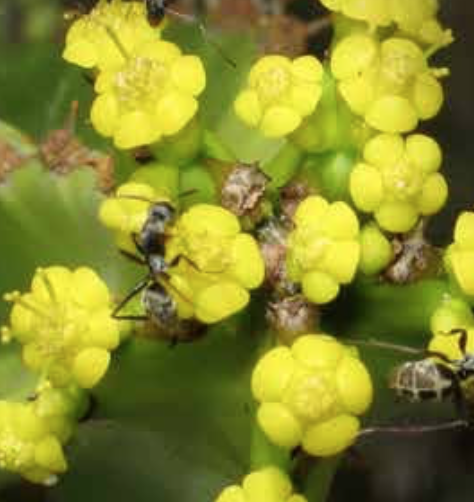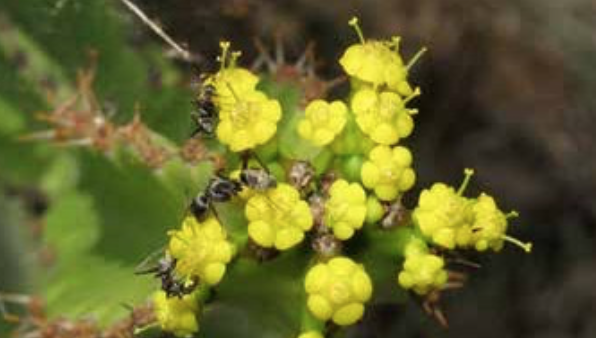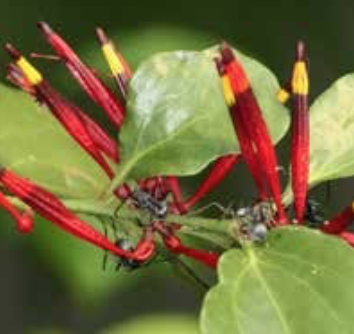While ants are among the most abundant, diverse and ecologically important groups of insects in the ecosystem, they are on whole not good pollinators. A few succulents and other plants (including some Euphorbias) are pollinated by ants. Plants in harsh, arid drylands are the ones that seem to rely on ants as there might be few other pollinators available. Ant-pollinated succulent plants also tend to be low-growing close to the ground where ants can more easily access the flowers.
Why don’t ants make good pollinators? Well, firstly the worker ants that visit flowers lack wings and typically forage short distances between their nests and the plants. This means that they are not efficient at carrying pollen over long distances.
Secondly, ants are obsessed with keeping clean, and by constantly grooming and producing glandular secretions, they often remove grains of pollen. These chemical secretions produced by the ants are for killing germs, but have an impact on pollen too.

Ants will often visit flowers for nectar, and occasionally to hunt other insects. Many plants encourage ants to visit by secreting nectar from special glands that are located outside the flowers (hence called extra- floral nectaries). These glands encourage ants, and they end up patrolling the plant providing some protection from greedy herbivorous insects who might want to feed on the plant.



